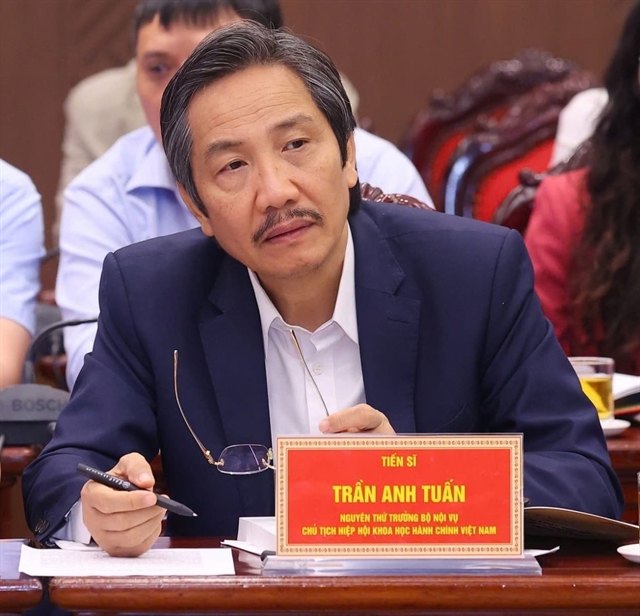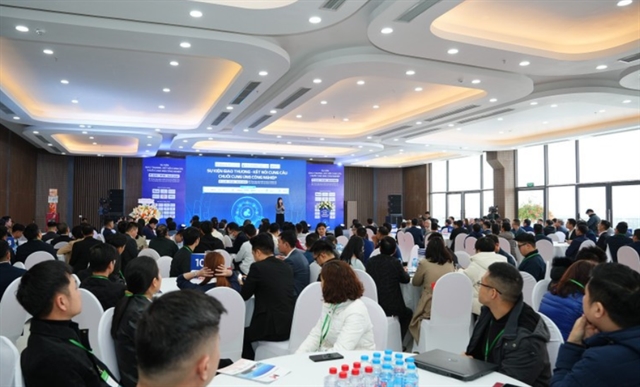 Politics & Law
Politics & Law

 |
| Trần Anh Tuấn, Chairman of the Vietnam Association for Administrative Sciences and former Deputy Minister of Home Affairs. — VNA/VNS Photo |
After three major rounds of government restructuring across three terms since 2007, as noted by Party General Secretary Tô Lâm, Việt Nam’s organisational reform efforts still has not hit the mark.
Trần Anh Tuấn, Chairman of the Vietnam Association for Administrative Sciences and former Deputy Minister of Home Affairs, told Vietnam News Agency's reporter about the persistent barriers and the possible solutions.
The General Secretary has highlighted the shortcomings in the political system's organisational structure. As someone participating in structural reforms, what are your thoughts on the major restructuring efforts over the past years?
The General Secretary’s observations are accurate and reflect the current situation.
In my view, restructuring must begin with a shift in mindset and perception. Once we approach the issue correctly, we can identify and implement solutions effectively.
Previous reforms have achieved significant results, such as reducing the number of ministries from over 30 to 22 and consolidating subordinate government agencies to just eight since 2011. The multi-sector, multi-field organisational model of the government has also evolved positively.
The reforms have coincided with efforts to reduce staff, improve the quality of civil servants and transition to a merit-based public service system.
These steps have supported the nation's economic and social development goals. However, calling these efforts 'major surgeries' might be overstating their scope - they are more accurately described as foundational steps toward streamlining the system.
That said, limitations remain. The organisational apparatus is still unwieldy, with overlapping functions and unclear delegation of authority. While decentralisation has been promoted, the self-governance capabilities of local governments have not been sufficiently enhanced.
Currently, we are implementing Resolution 18 to address these challenges comprehensively and scientifically. The goal is to reform the apparatus once and for all, avoiding the frequent reshuffling or legal revisions that have occurred in the past, which waste time and resources. Stability and durability in regulatory frameworks are critical for success.
What lessons can we draw from past organisational reform efforts?
The first lesson is the importance of reforming our mindset. The current approach to organisational structure, public service systems, and decentralisation is still influenced by centralised planning and is incompatible with a market economy, a socialist rule-of-law state, and the principles of socialist democracy under Party leadership.
A paradigm shift is necessary to adapt to the realities of the market economy and emerging technologies like digital transformation and artificial intelligence. Correct thinking leads to accurate understanding and effective action.
The second lesson is to avoid mechanical mergers of organisations. While reducing the number of agencies might appear effective, it often leads to increased bureaucracy within the merged entities. Without reducing the number of staff or improving their quality, restructuring becomes superficial and adds to budget burdens.
The next lesson pertains to decentralisation. Although we advocate for it, its implementation is often superficial. Local authorities frequently defer decisions to central agencies, reflecting a lack of mutual trust and autonomy. This inefficiency hampers governance and development opportunities.
The fourth lesson underlines the need to move beyond mechanical mergers to create entirely new organisations by dissolving redundant ones. This approach avoids simply combining multiple entities under a new name without addressing inefficiencies.
Finally, reforms must ensure lasting changes. Avoid the cycle of merging and splitting agencies, which causes resource wastage. This inefficiency underscores the need for careful, science-based planning to ensure reforms are meaningful and sustainable.
Given the revolutionary nature of this round of restructuring, how can we ensure its success?
This reform effort is indeed revolutionary. To succeed, it must be comprehensive, thorough and synchronised across the political system. Success will be amplified if administrative unit reforms at the provincial level are also implemented in tandem.
The process must avoid mechanical restructuring. New organisations should be designed with clear functions and aligned with the needs of national governance, market economy development and digital transformation. A proper restructuring is not merely merging existing units but establishing entirely new frameworks tailored to contemporary requirements.
Following the General Secretary’s directive, we must maintain a unified mindset, political determination, and bold action. While we may need to 'build the plane while flying it,' this does not mean acting rashly. A scientific and holistic approach is essential.
What are the biggest challenges in this reform?
The greatest challenge lies in changing mindsets and achieving consensus in perception. It also requires courage—the willingness to prioritise national and public interests over personal or group benefits.
Without objectivity, fairness and selflessness, we risk falling into old patterns of half-hearted reforms that fail to achieve meaningful results.VNS


.jpg)

